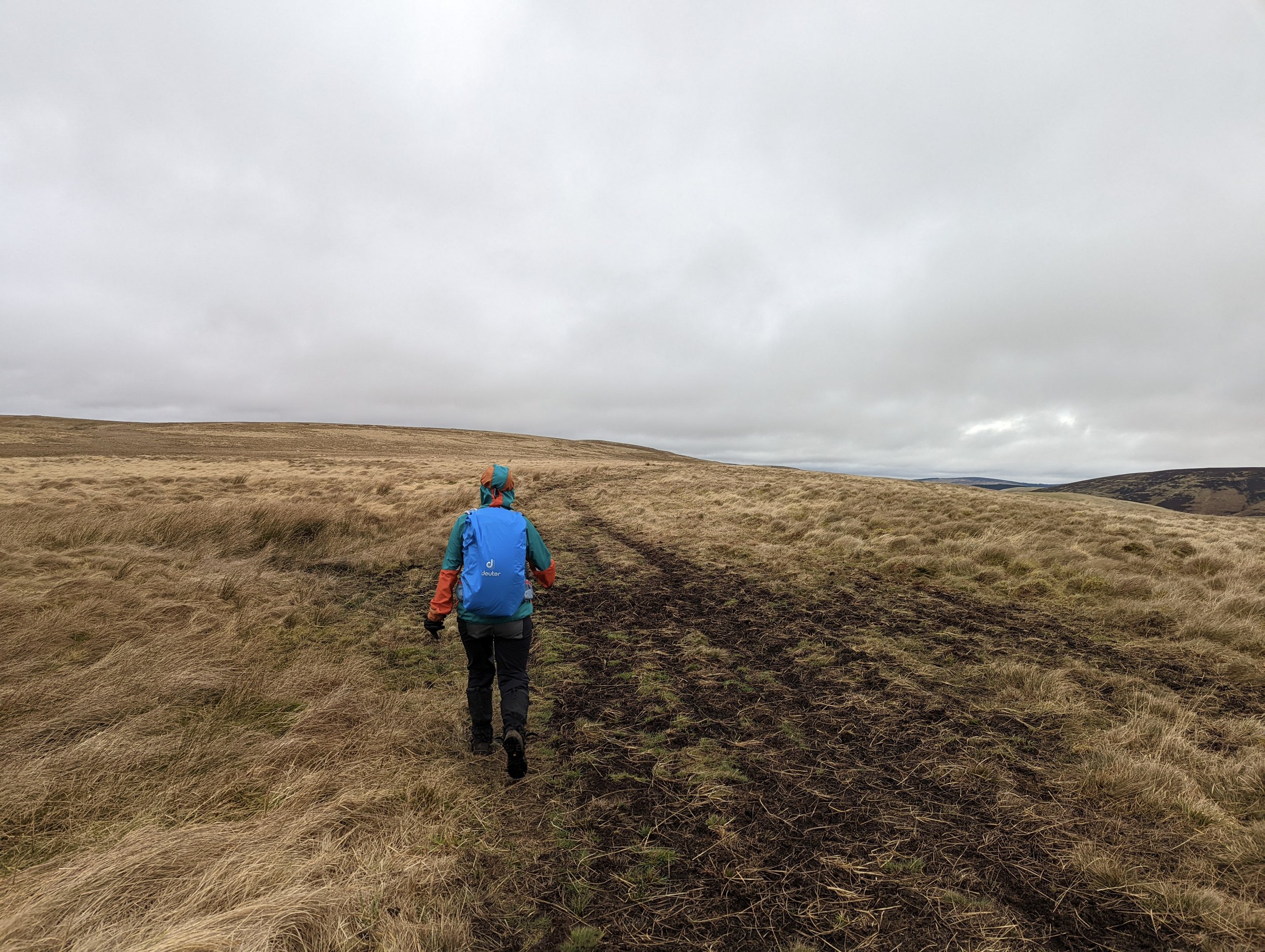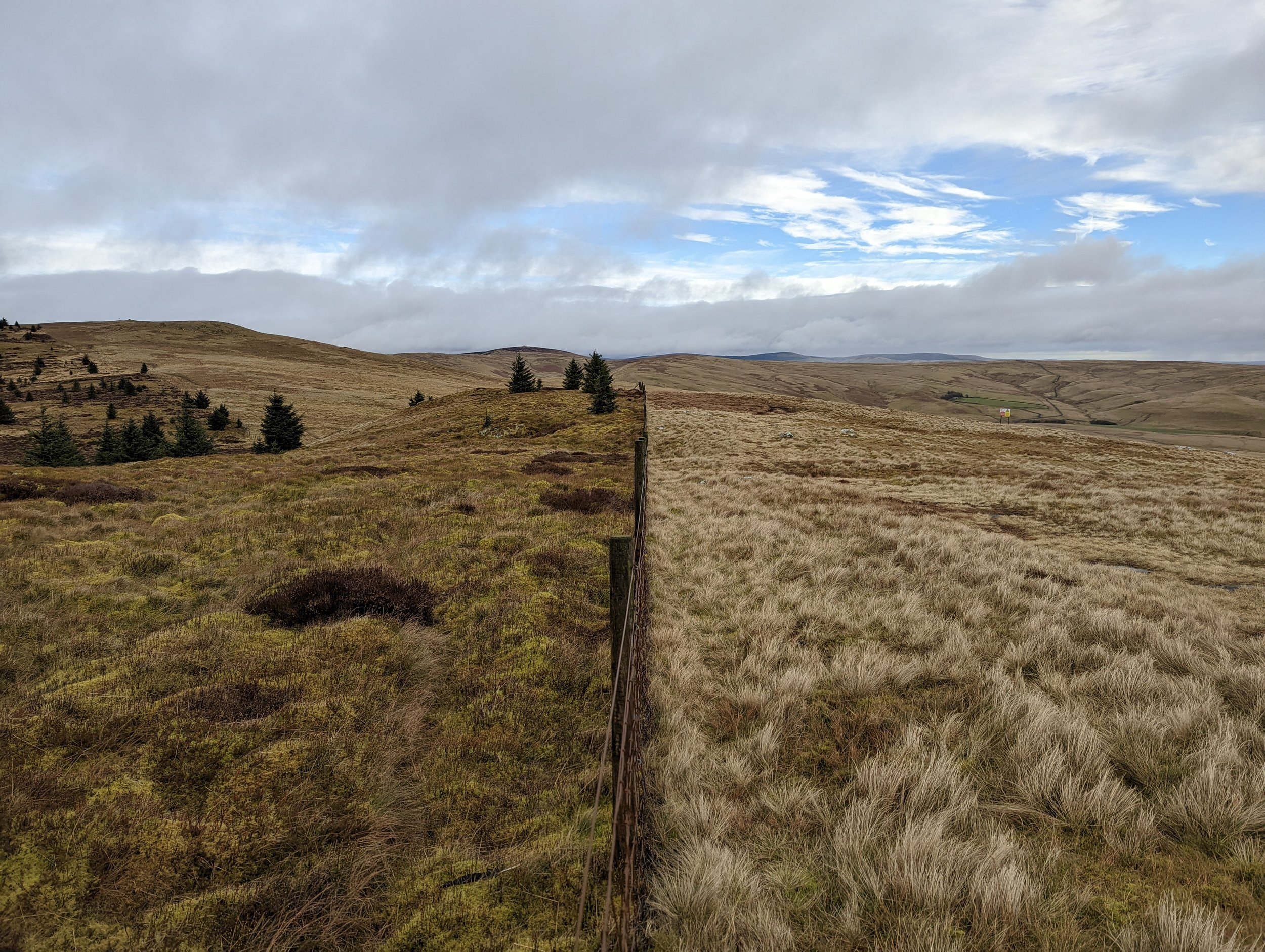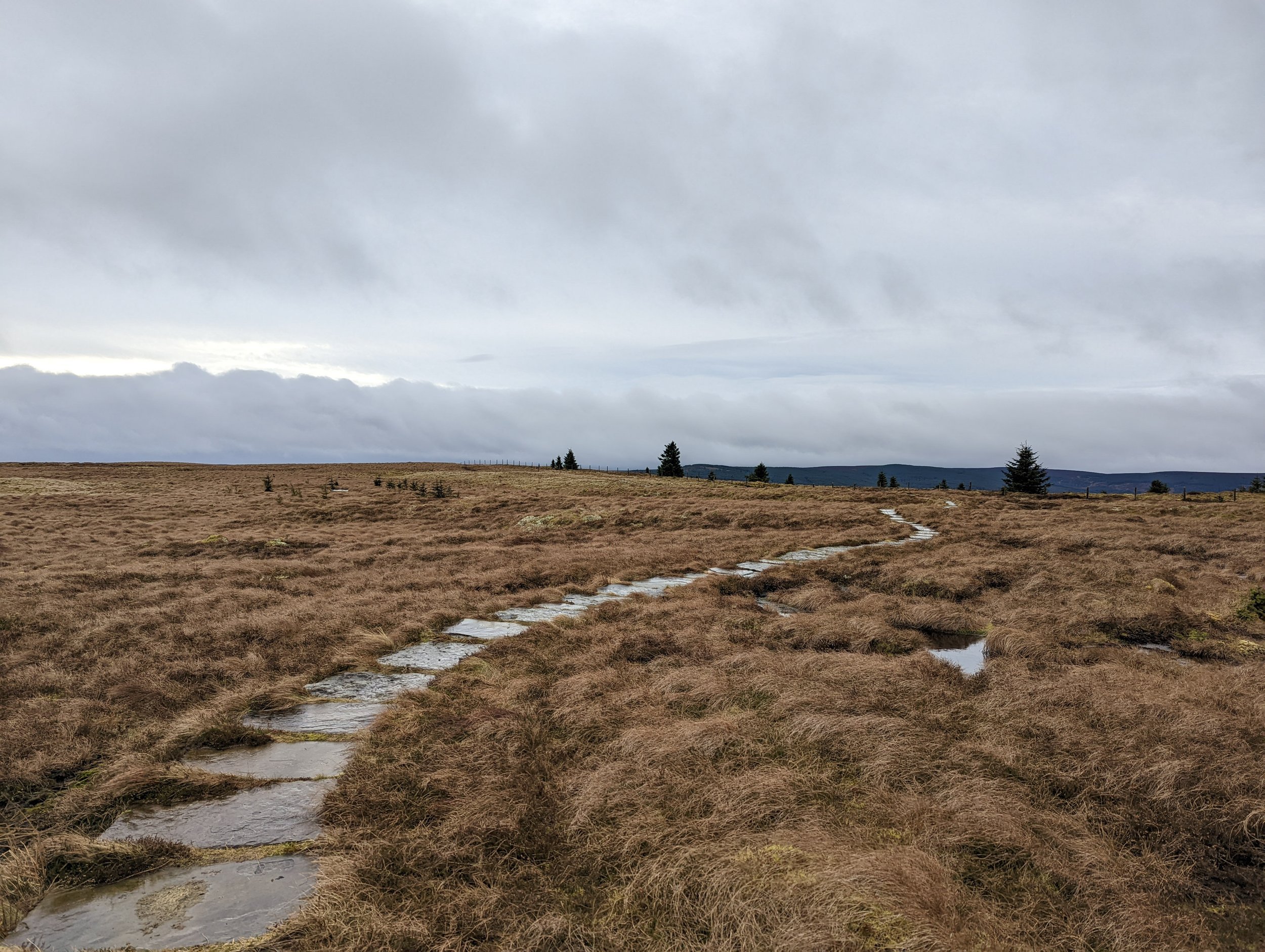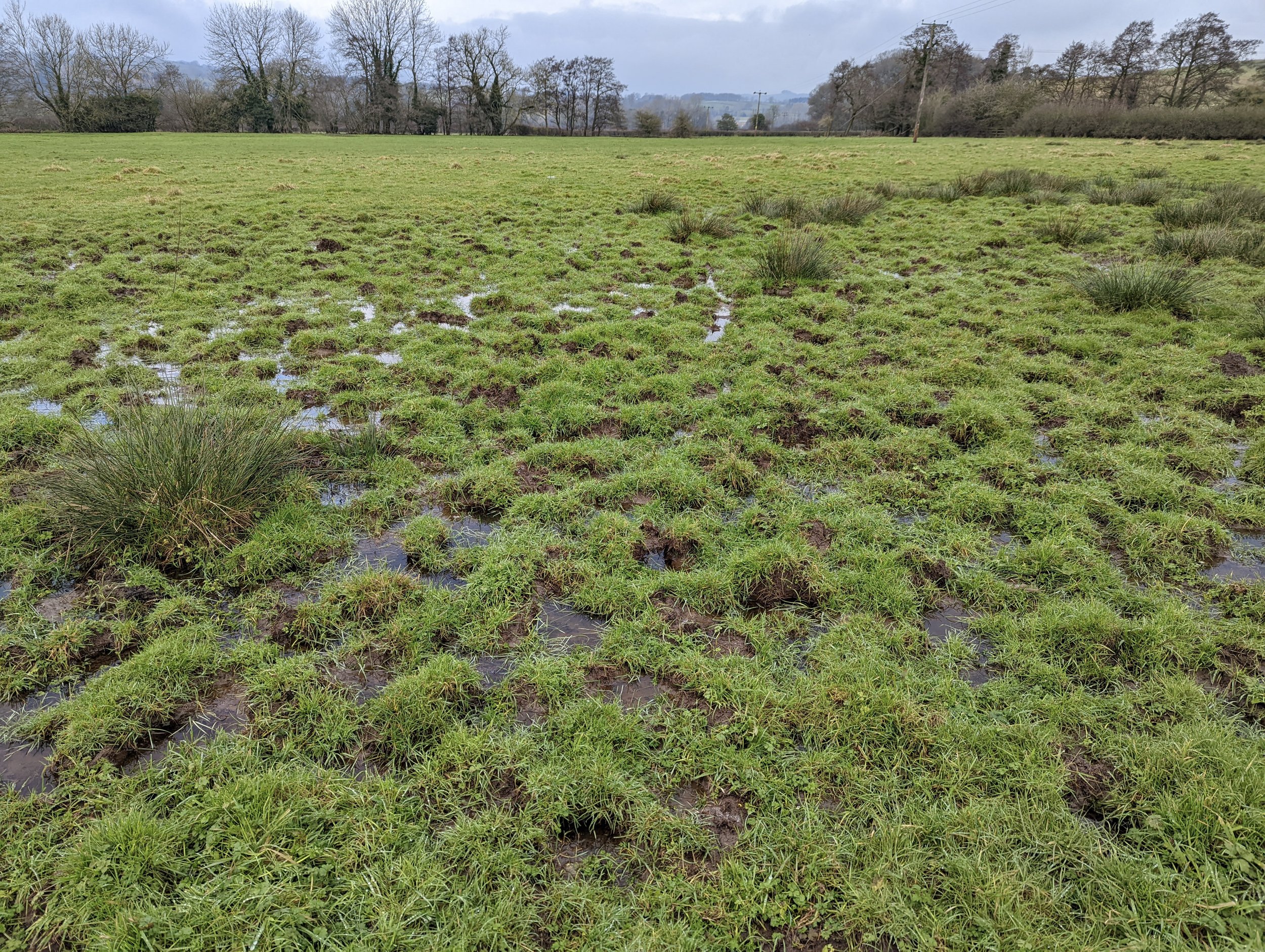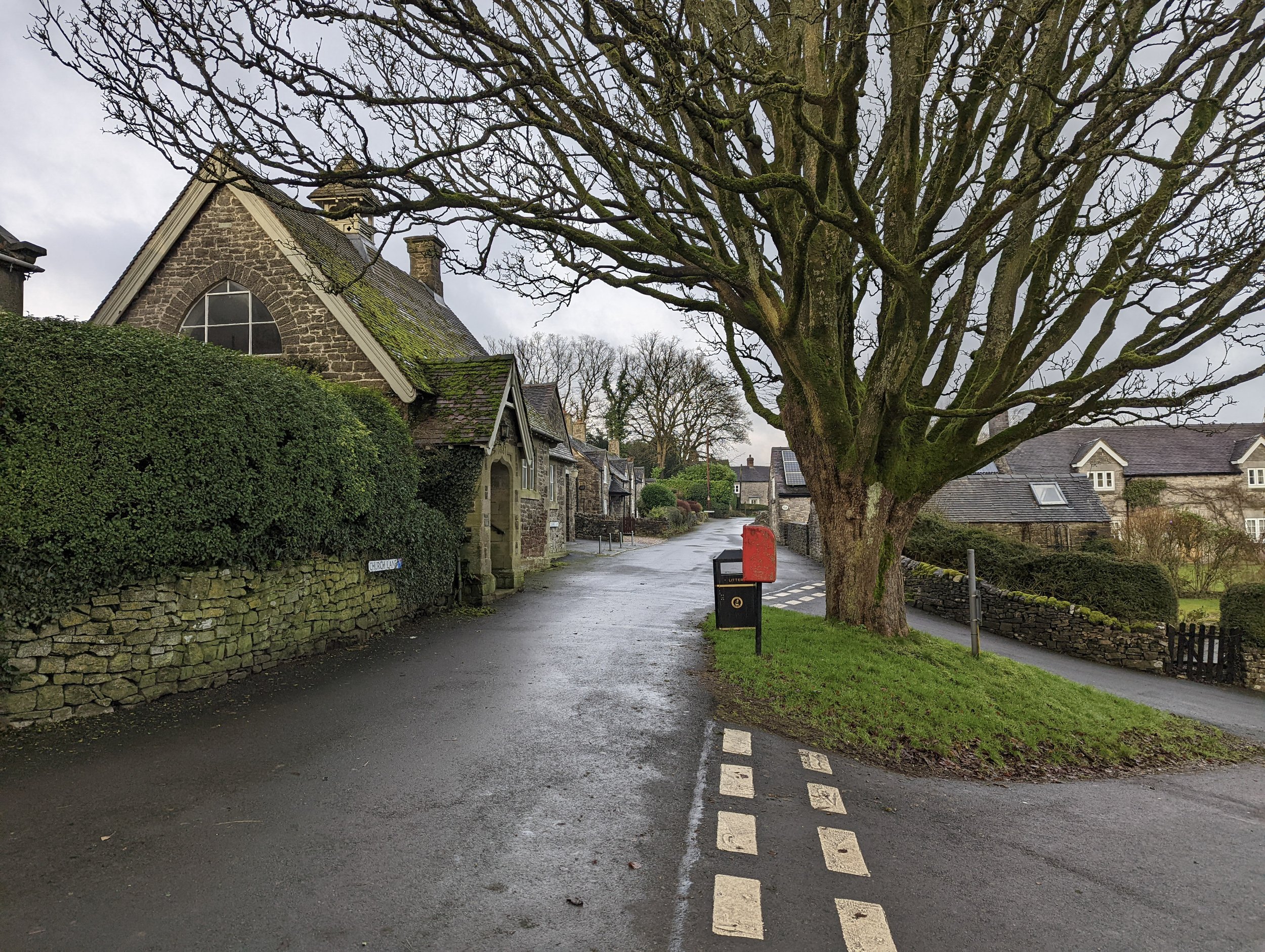Downloads: GPX File | KML File | FIT File | Google Maps File | OS Online route
About Otterburn Ranges | About Chew Green Roman Fort | About Pennie Way
Parking Location | OS Map | Current Weather
Starting out in Byrness, we followed the main road until we hit the section where the Pennine way crosses over the road. We latch onto the path and then start the assent up the hill to take in this section of the Pennine way. This path is a direct route up the hill, a little unforgiving at first before taking in a steadier climb. It's mostly through woodland, and surprisingly considering this routh a main “way” it’s a small, albeit very clear path.
As we started to rise above the trees, the views became better and better. As we neared the edge of the woodland, we found a few trees down over the path. We managed to make our own way around these and then exited the woodland. Crossing over a forest path, we carried on up and headed over a much rockier section where the views out down the valley were extremely picturesque.
It was here we came across the first of a few military warning signs, stating that the ranges are a live firing area and to not wander into the ranges or pick anything up. The OS Map’s clearly lay this information out, so make sure you’re carrying one.
From here, we headed left, following the Pennine way. This takes you across a large hilly section of the Otterburn Ranges. It’s here that the beauty of the undulating raw hills comes out. It’s a wild place, and with the weather soon moving in, the harsh wind that had developed made it feel all the wilder. Making our way along the path, we passed a few more signs. Once we started to run more parallel with the woodland below us, the ground grew boggier in sections. Luckily, these are cut through with a wooded walkway or rocky steps, both of which make it very easy to not get wet feet. Eventually, we take a left turn to face Grindstone Law and Scotland. From here the path drops down and you still have the rawness of the area on show but with a view out to even more hills and mountains than before.
Still following the path running parallel to the wooded area to our left, we left the woodland behind and entered Scotland! About 20 minutes of walking through a grassy and bumpy path swings you around and heads towards the Roman fort. Winding back over the border into England again, we soon reached the fort. There isn’t much to see here, some obvious remains of a fort but as they’re all grass covered, I imagine the view is much better from above than ground level.
5 minutes of looking for old roman coins (because why not!) and we started back. We re-traced our steps back over the Scottish border, and then again into England before joining up with the path and the woodlands.
Here we went over a small hidden stile and took a permissive path through the forest. It is Forestry commission land here, so there is a substantial number of tree stumps over the floor between the small scattering of trees. It is bit of a rough trek here, there is no real path to follow and the tree stumps along with the thicker tree coverage means more concentration is needed for walking. As slow going as it was, it was still the most direct route back.
Once out of the main wooded section, we emerged onto a forest track. From here it is a case of walking the flat track all the way down the hill and back to the bottom. Just because it’s a generic forest track doesn’t mean it’s boring. It sweeps through the valley and even runs past a Bothy, all while still having fantastic views out to the valley bellow and the endless forests around the national park.
Once at the bottom, we followed the A68 back to where we had parked, there is no path here but there is plenty of space on the grass verge at the side of the road. In summary, this is a wonderful wild walk, taking in an interesting part of the UK. We will definitely be back exploring here in the future.

















